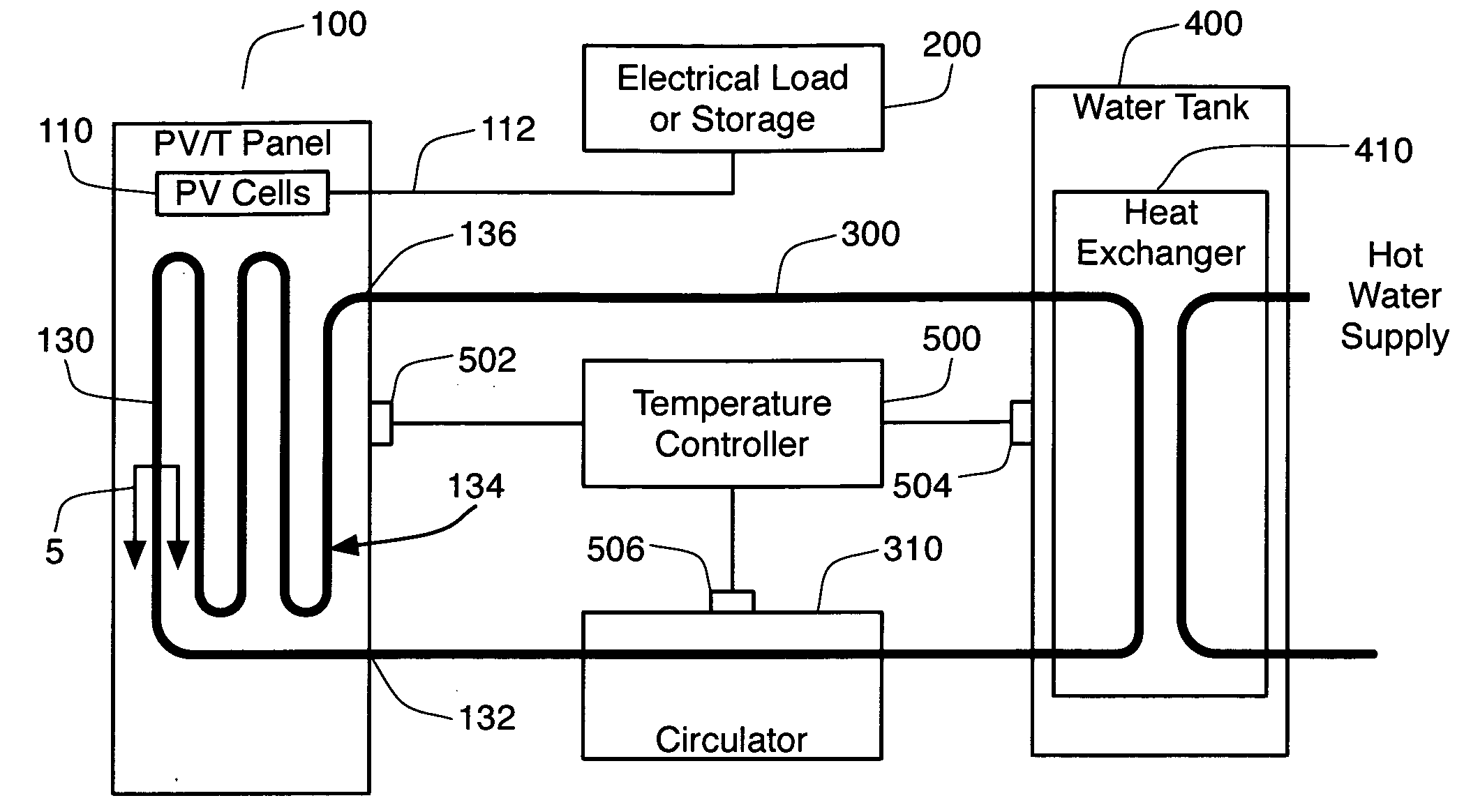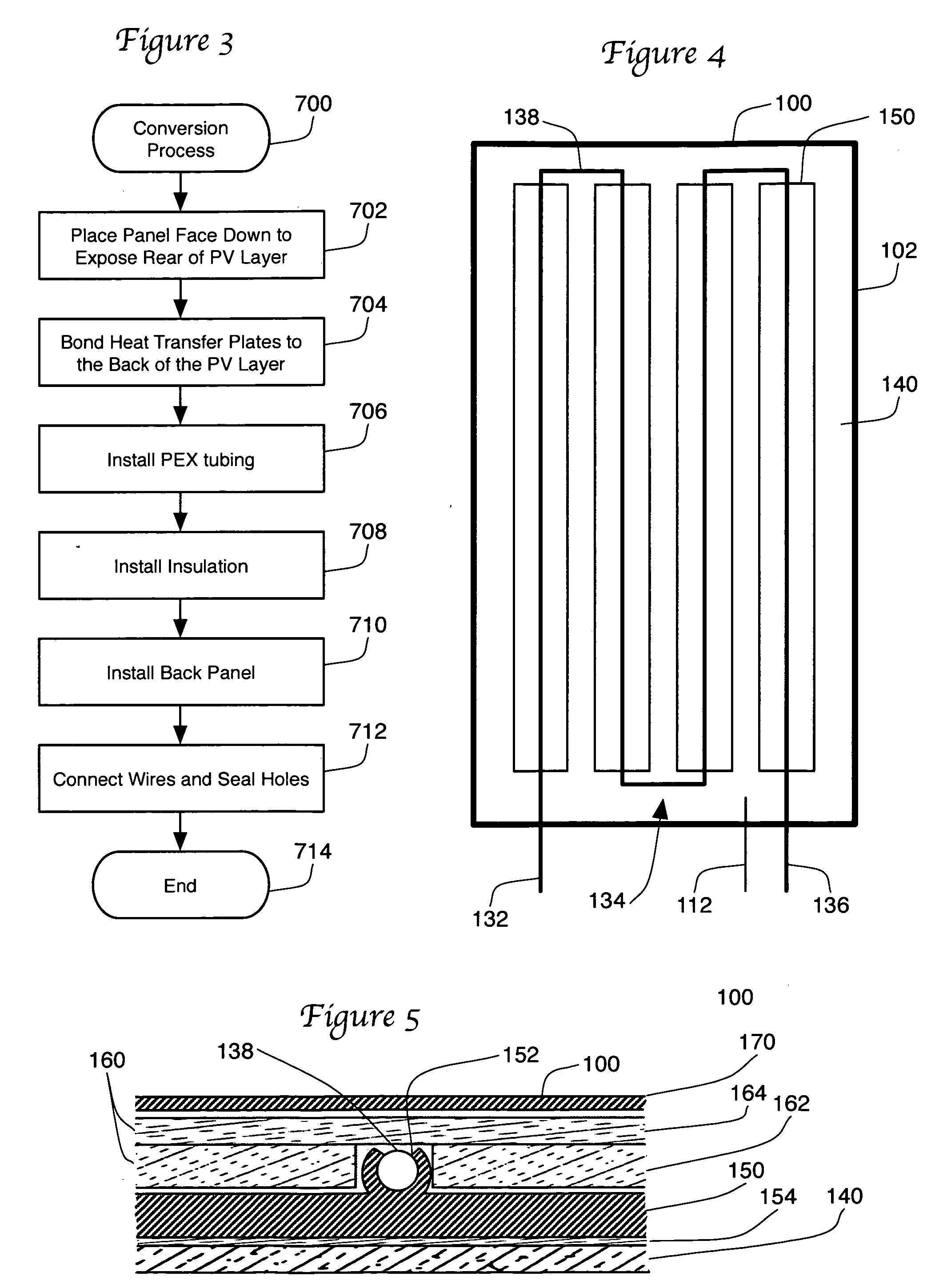Unglazed photovoltaic and thermal apparatus and method
a photovoltaic and thermal apparatus technology, applied in the field of solar energy panels, can solve the problems of insulating glazing, gap left between the pv array and the transparent sheet, and the performance of pv and thermal collectors separately optimized for their applications, so as to achieve the effect of reducing the insulating glazing, reducing the temperature, and improving the efficiency
- Summary
- Abstract
- Description
- Claims
- Application Information
AI Technical Summary
Benefits of technology
Problems solved by technology
Method used
Image
Examples
Embodiment Construction
Recognition of the Problem
[0016]Prior art PV / T systems work by using an insulative glazing to retain heat within the panel. This heat retention allows the heat transfer fluid that removes heat from the panel to reach a higher temperature. This in turn extends the range of potential applications and allows heat to be carried away from the panel at lower fluid flow rates. However, as recognized by the applicant, the use of higher working temperatures in the PV / T panel comes at a significant cost. The differential coefficients of thermal expansion of insulative glazing and frame require intricate provisions to maintain sealing integrity under the wide temperature variations encountered. Evacuation of gas from the enclosure or instillation of an inert gas is also usually required to prevent PV deterioration. These measures add to the weight, complexity, cost and maintenance requirements of glazed PV / T systems, thus decreasing their practical application while also compromising the elect...
PUM
 Login to View More
Login to View More Abstract
Description
Claims
Application Information
 Login to View More
Login to View More - R&D
- Intellectual Property
- Life Sciences
- Materials
- Tech Scout
- Unparalleled Data Quality
- Higher Quality Content
- 60% Fewer Hallucinations
Browse by: Latest US Patents, China's latest patents, Technical Efficacy Thesaurus, Application Domain, Technology Topic, Popular Technical Reports.
© 2025 PatSnap. All rights reserved.Legal|Privacy policy|Modern Slavery Act Transparency Statement|Sitemap|About US| Contact US: help@patsnap.com



